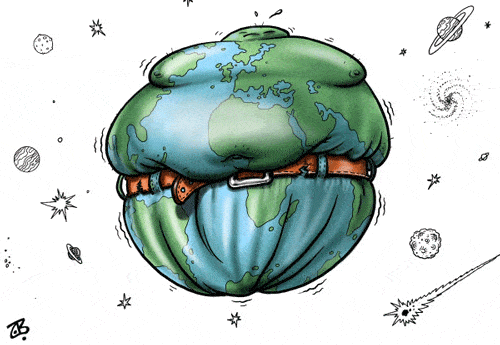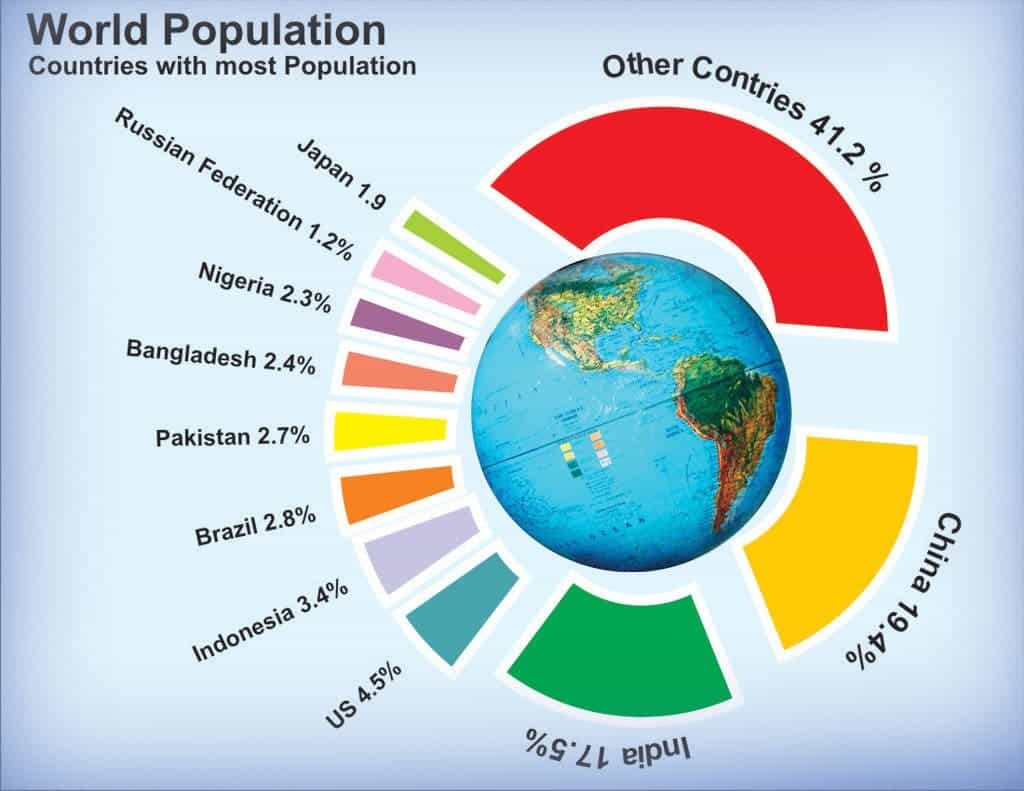
A new report presented by United Nations officials at the American Statistical Association meeting in Seattle estimates that by 2100 the world’s population will reach 11.2 billion people. Another less conservative scenario, however, estimates a numbers of 13 billion. Right now, there are 7.3 billion living in the world or around 80 million people more than last year.
Driving world population growth is a combination of increased longevity and lower child mortality rates throughout the world, according to John Wilmoth, director of the population division at the United Nations. Even so, the growth is slightly slower than before. In the past 12 years, an extra billion people were added to the world population, but now its growing only by 1.18% annually. So, what can we make of this? Well, a growing population should first and foremost be taken as good news. It means things are actually getting better in the world. People all over the world are living longer and less babies die prematurely. So, what’s the bad news then? Well, the bad news is that while the actual number of people on the planet is growing, the quality of life isn’t necessarily rising on par. Not equally distributed, at least. Specifically, poor countries with a long history of conflict and ineffective governance will find it increasingly difficult to keep up, especially sub-Saharan countries where UN officials estimate an explosive growth in population.
“The concentration of population growth in the poorest countries will make it harder for those governments to eradicate poverty and inequality, combat hunger and malnutrition, expand education enrollment and health systems, improve the provision of basic services and implement other elements of a sustainable development agenda to ensure that no one is left behind,” they wrote.
Here are some of the key findings from the report:
- the growing populace could have wide-ranging impacts on the environment, economy, and health, including maternal and child mortality and lagging government investments in health, education, and infrastructure.
- of the 7.3 billion currently living in the world, one billion use most of the resources. This tells us that the number of people in the world isn’t that important – it’s the way these people use resources that bears the most consequences. Take, for instance, China. The country’s population will reach its peak by 2030 and then steadily fall, mirroring the trendline seen today in developed countries like the US. At the same time, China and countries like it, will experience a massive increase in the quality of life, ie: they will want more consumer electronics and, maybe most importantly, more meat. Consider that by 2022, half of the world’s feed crops will be eaten by, wait for it, Chinese pigs. So, what the UN and world governments need to work on together is to find a solution to this problem (i.e. less meat, more renewable energy sources etc).
- More than half of the global population growth is expected to happen in Africa, with numbers expecting to reach 1.3 billion by 2050. Countries like the Democratic Republic of Congo, Niger, Somalia, Uganda, and others will see five-fold increase by 2100.
- Asia is expected to contribute with one extra billion people by 2100. While China has the largest population today, India will surpass it in just seven years.
- On the other hand, some developed regions could see the population decreasing by as much as 15%. To maintain a current population, scientists estimate each mother needs to birth 2.1 babies (one for each parent), but the birth rate in Europe right now is only 1.6 children per woman. Of course, immigrants from crowding regions will makeup.
- Wilmoth suggests lowering fertility rates by massive deployment of contraceptives as a way to curb population growth in key areas where there’s a risk of overcrowding. “People will find a way to find birth control, one way or another,” he said. “They are often dangerous and not as effective compared to if they have modern services provided to him.”
- The world’s population is rising faster than doctors can keep up. World Health Organization determined that for every 1,000 people on the planet, there is a need for 2.3 doctors, nurses, and midwives. According to this ratio, for the 9.7 billion people expected to live on the planet in 2050, more than 22 million healthcare workers will be needed to care for them. At the same time, WHO estimates a global healthcare worker shortage of 12.9 million people by 2035.
- By 2020, a new demographic milestone will be reached: The number of elderly will exceed the number of infants.
- People over the age of 65 will increase to 1.5 billion, mostly in developed countries. That means 16 percent of the world’s population will be elderly. This implies a shift of the main global health risks from infectious to chronic diseases like heart disease, cancer, and diabetes. Efforts will be required to help the elderly live better and healthy, not just longer. If people who are 65 in 2100 can feel as healthy as an average 55 year old today, then there might be reason to believe these people can work for 10 more years and thus lessen the strain on social care and society as a whole.










